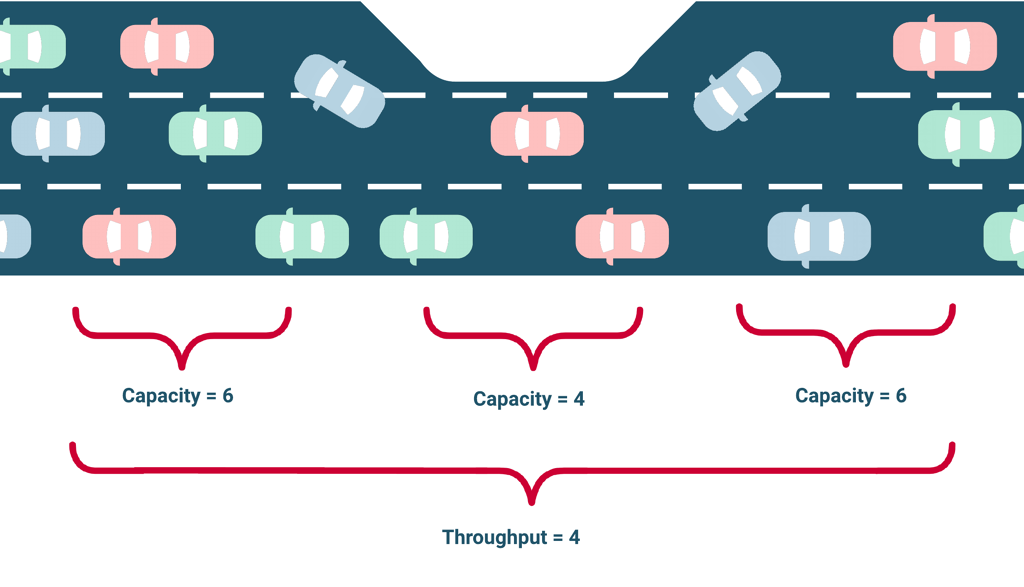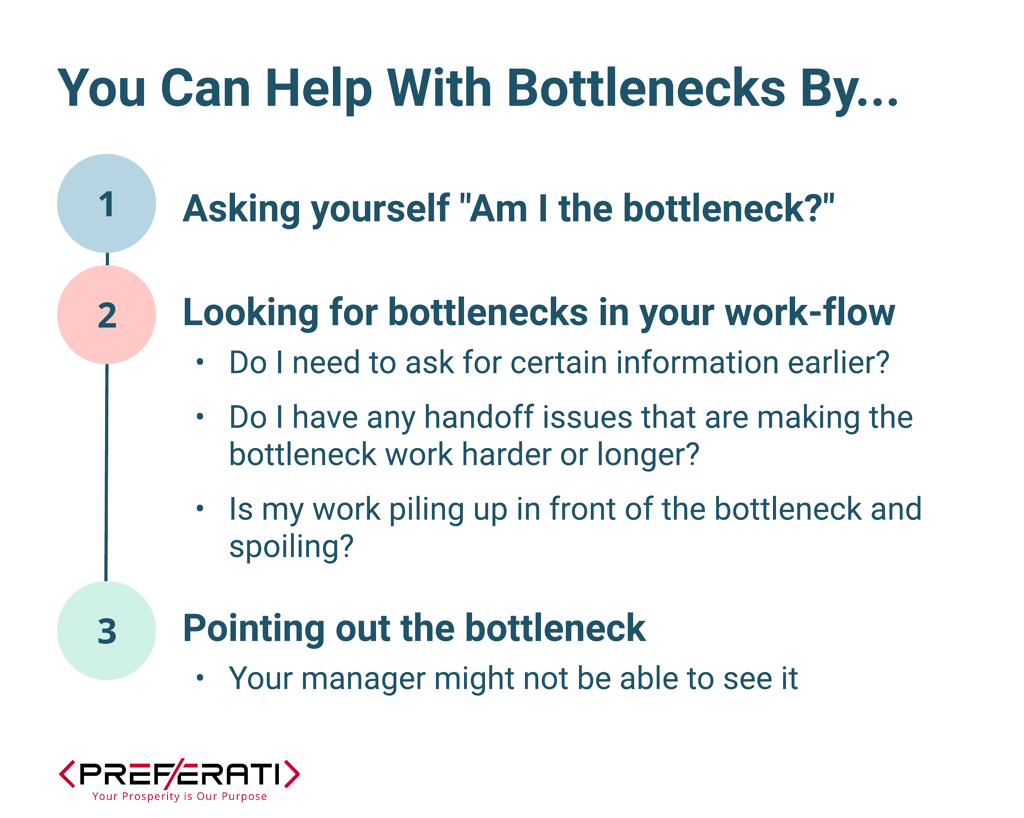When your team isn’t making enough progress, it’s tempting to push everyone to work harder.
But that’s a mistake. Instead, “find the bottleneck” – where the work is getting stuck in the process.
Let’s put this into action. Look at something your team regularly delivers that you wish you could deliver faster or more smoothly. Next, list the steps in this process. A step is every time work moves from one person or someone has to wait for something. You should have five to 10 steps for the purpose of this exercise.
For example, our team regularly creates software features for our customers. Here is our project manager’s process:
- A user story comes in
- PM clarifies the user story (ask questions)
- PM writes the specs
- PM creates the wireframe/design
- Client confirms the wireframe/design meets their needs as far as they know
- PM verifies understanding with the dev team
- Dev team starts coding
- Dev team sends feature to QA
- QA sends the work back
- Dev team takes the work live
- QA at live
- PM reviews it and sends to the client (possibly demos)
- Client reviews
- PM writes documentation
In a perfect world, everyone in the process does their step properly at a rate that matches the other steps, so things flow smoothly. But it’s never this way in reality because of bottlenecks.
What is a bottleneck?
You can only go as fast as your slowest step. A great way to illustrate this is traffic. Please view the graphic below.
Even though there is enough room for six cars on the right, only four can fit through because of the bottleneck. Telling all of the cars to go faster will only lead to crashes. Instead, we need traffic cops at the closed lane to direct cars through just at this point. We need to focus on the bottleneck to move traffic in a timely manner.

Work that piles up in front of bottlenecks is potentially wasted.
The majority of tasks have an expiration date. Clients get tired of waiting for a feature they requested and will find someone else to fix it for them or a different workaround. This isn’t limited to just the beginning, the work can spoil at any stage in your process. The longer work sits in process, the less likely it is to ever be successfully delivered.
This is why you have to watch for work that gets too refined, too early in front of the bottleneck. Refined work that doesn’t move forward risks spoiling and being wasted the longer it sits, and the more effort that was put into refining it, the more waste.
For example, if a recruiting client can’t process the candidates as quickly as we send them, many of the candidates become unavailable and the effort is wasted.
How do you spot bottlenecks?
Some bottlenecks are obvious such as in manufacturing-type situations, but they are more complicated to find in service businesses. To find them, you have to look for places where work piles up or causes resources to be idle. Unfortunately, bottlenecks move around all the time in services. But as you work harder towards standardizing your service, it is easier to identify bottlenecks.
How do you resolve bottlenecks?
- You can “elevate” the bottleneck, which is where you prioritize everything around the bottleneck. You arrange your work so the bottleneck is never idle and is only receiving perfectly prepared work to pass through with max efficiency.
- If the bottleneck is a person, remove all other duties from their job description
- Do everything you can to make that person happy, efficient, and hyper-focused on the things only they can do
- Add process before the bottleneck to ensure only perfectly prepared work goes through it
- Specs are clear, thorough, easily understandable
- Client signed off
- Contingencies accounted for
- Obvious questions answered
- You can “expand” the bottleneck by finding an additional person who can do it, outsourcing it, or assisting it.
- Find an additional person → Adding another person can help process the bottleneck faster. You aren’t limited by the capacity of a single person.
- Outsource it → Move the bottleneck step externally to a business that specializes in it.
- Assist it → If the bottleneck is a person, find them an assistant to make them more productive and efficient.
- You can “circumvent” the bottleneck by finding an alternative way to complete the process without the bottleneck.
- If all else fails, you can reduce production before the bottleneck. You should only do this if you can’t elevate, expand, or circumvent the bottleneck.
- You accept that you can only move as fast as the bottleneck and work on reducing the waste in front of it.
- You slow down work in front of the bottleneck and those people split their time on other, more productive work.
- You select only the most important or valuable work to go through the bottleneck.
Realize that not all steps in your process deserve equal attention.
Focus on the bottlenecks. Fundamental misunderstandings and quality issues can make the bottleneck hard to find.
For example, you might say the client is the bottleneck because they are slow to give feedback. But perhaps they are slow to give feedback because they are really frustrated with how far off the work is compared to what they thought they asked for. In this case, they are still the bottleneck – but the solution isn’t with them.
Remember US teams are less hierarchical than most cultures. When on a US team, you are a “mini manager” and manage yourself and contribute to the management of the team.
Even if you aren’t a manager,

Simply being aware of bottlenecks in your team’s processes, especially including the steps that are outside your team, will set you apart on a US team. This sort of above and beyond strategic thinking will accelerate your career.
If you want to learn more, check out these books to educate yourself further on bottlenecks.
- The Goal: A Process of Ongoing Improvement by Eliyahu M. Goldratt and Jeff Cox
- High Output Management by Andrew S. Grove
